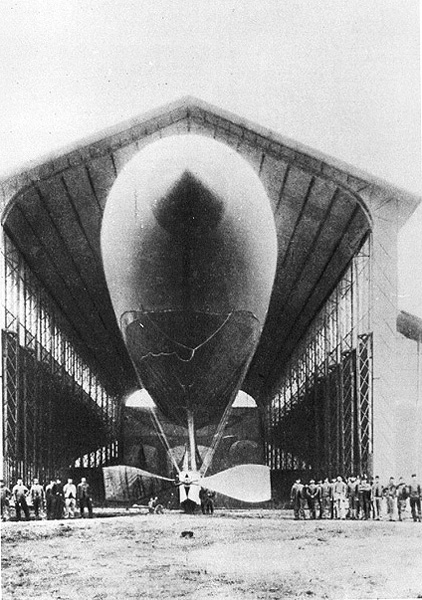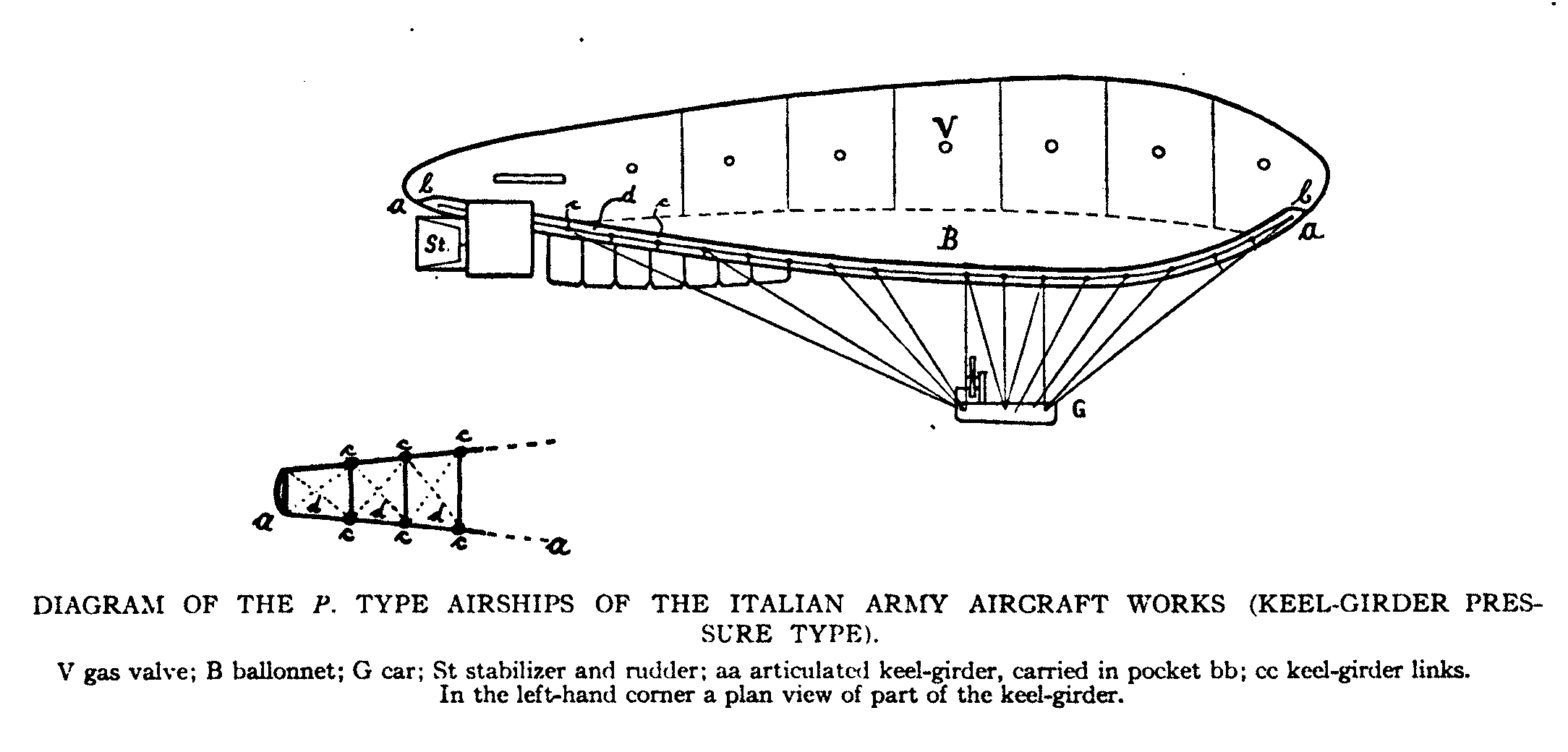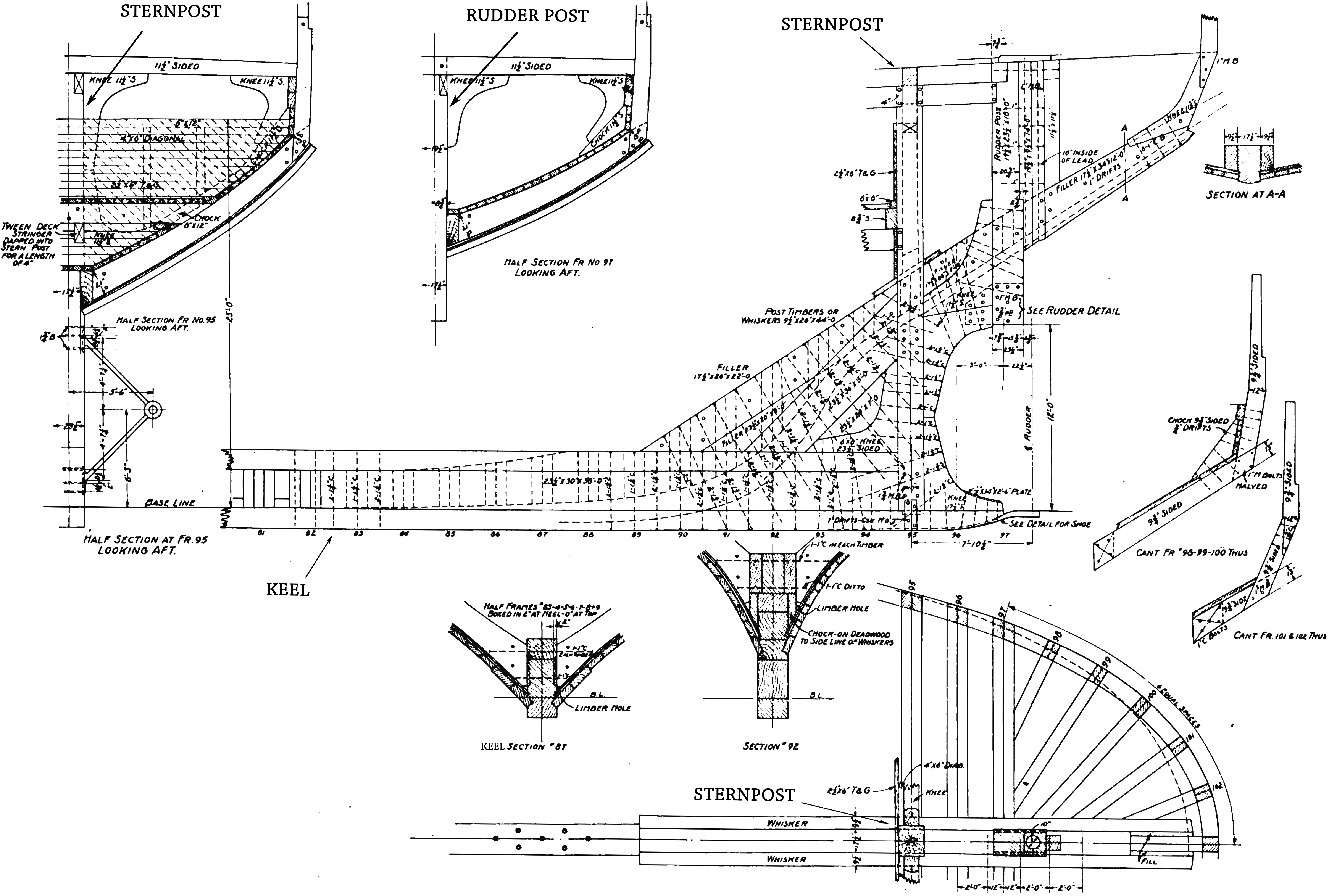|
Ballonet
A ballonet is an inflatable bag inside the outer envelope of an airship which, when inflated, reduces the volume available for the lifting gas, making it more dense. Because air is also denser than the lifting gas, inflating the ballonet reduces the overall lift, while deflating it increases lift. In this way, the ballonet can be used to adjust the lift as required. Ballonets may typically be used in non-rigid or semi-rigid airships, commonly with multiple ballonets located both fore and aft to maintain balance and to control the pitch of the airship. The image illustrates the principle of a balloon within a balloon. The outer balloon represents the airship's outer envelope or gasbag, while the red inner balloon represents the ballonet. In an airship the ballonet would be much smaller relative to the size of the gasbag; for example, in the French airship Lebaudy Patrie the volume of the ballonet was approximately one-fifth that of the envelope. History The ballonet was fi ... [...More Info...] [...Related Items...] OR: [Wikipedia] [Google] [Baidu] |
Airship
An airship, dirigible balloon or dirigible is a type of aerostat (lighter-than-air) aircraft that can navigate through the air flying powered aircraft, under its own power. Aerostats use buoyancy from a lifting gas that is less dense than the surrounding air to achieve the lift (physics), lift needed to stay airborne. In early dirigibles, the lifting gas used was hydrogen gas, hydrogen, due to its high lifting capacity and ready availability, but the inherent flammability led to several fatal accidents that rendered hydrogen airships obsolete. The alternative lifting gas, helium gas is not flammable, but is rare and relatively expensive. Significant amounts were first discovered in the United States and for a while helium was only available for airship usage in North America. Most airships built since the 1960s have used helium, though some have used thermal airship, hot air. The envelope of an airship may form the gasbag, or it may contain a number of gas-filled cells. An air ... [...More Info...] [...Related Items...] OR: [Wikipedia] [Google] [Baidu] |
Airships
An airship, dirigible balloon or dirigible is a type of aerostat (lighter-than-air) aircraft that can navigate through the air flying under its own power. Aerostats use buoyancy from a lifting gas that is less dense than the surrounding air to achieve the lift needed to stay airborne. In early dirigibles, the lifting gas used was hydrogen, due to its high lifting capacity and ready availability, but the inherent flammability led to several fatal accidents that rendered hydrogen airships obsolete. The alternative lifting gas, helium gas is not flammable, but is rare and relatively expensive. Significant amounts were first discovered in the United States and for a while helium was only available for airship usage in North America. Most airships built since the 1960s have used helium, though some have used hot air. The envelope of an airship may form the gasbag, or it may contain a number of gas-filled cells. An airship also has engines, crew, and optionally also payload acc ... [...More Info...] [...Related Items...] OR: [Wikipedia] [Google] [Baidu] |
Ballonet Analogue
A ballonet is an inflatable bag inside the outer envelope of an airship which, when inflated, reduces the volume available for the lifting gas, making it more dense. Because air is also denser than the lifting gas, inflating the ballonet reduces the overall lift, while deflating it increases lift. In this way, the ballonet can be used to adjust the lift as required. Ballonets may typically be used in non-rigid or semi-rigid airships, commonly with multiple ballonets located both fore and aft to maintain balance and to control the pitch of the airship. The image illustrates the principle of a balloon within a balloon. The outer balloon represents the airship's outer envelope or gasbag, while the red inner balloon represents the ballonet. In an airship the ballonet would be much smaller relative to the size of the gasbag; for example, in the French airship Lebaudy Patrie the volume of the ballonet was approximately one-fifth that of the envelope. History The ballonet was fi ... [...More Info...] [...Related Items...] OR: [Wikipedia] [Google] [Baidu] |
Lebaudy Patrie
The Lebaudy ''Patrie'' was a semi-rigid airship built for the French army in Moisson, France, by sugar producers Lebaudy Frères. Designed by Henri Julliot, Lebaudy's chief engineer, the ''Patrie'' was completed in November 1906 and handed over to the French army the following month. The ''Patrie'' bears the distinction of being the first airship built specifically for military service. In 1907, from her base at Chalais-Meudon near Paris, a successful series of military manoeuvres was conducted with the airship by the military command, which included a visit by France's President of the Council Georges Clemenceau. Following the successful completion of these operations, in November 1907 the ''Patrie'' was transferred under her own power to her operational base at Verdun, near the German border. Due to a mechanical fault, the ''Patrie'' became stranded away from her base on 29 November 1907 in Les Souhesmes-Rampont, Souhesmes. During a storm on 30 November she was torn loos ... [...More Info...] [...Related Items...] OR: [Wikipedia] [Google] [Baidu] |
Jean Baptiste Meusnier
Jean Baptiste Marie Charles Meusnier de la Place (Tours, 19 June 1754 — le Pont de Cassel, near Mainz, 13 June 1793) was a French mathematician, engineer and Revolutionary general. He is best known for Meusnier's theorem on the curvature of surfaces, which he formulated while he was at the École Royale du Génie (Royal School of Engineering). He also discovered the helicoid. He worked with Lavoisier on the decomposition of water and the evolution of hydrogen. Dirigible balloon Meusnier is sometimes portrayed as the inventor of the dirigible, because of an uncompleted project he conceived in 1784, not long after the first balloon flights of the Montgolfiers, and presented to the French Academy of Sciences. This concerned an elliptical balloon (''ballonet'') 84 metres long, with a capacity of 1,700 cubic metres, powered by three propellers driven by 80 men. The basket, in the form of a boat, was suspended from the canopy on a system of three ropes. Jacques Charles and '' ... [...More Info...] [...Related Items...] OR: [Wikipedia] [Google] [Baidu] |
Semi-rigid Airship
A semi-rigid airship is an airship which has a stiff keel or truss supporting the main envelope along its length. The keel may be partially flexible or articulated and may be located inside or outside the main envelope. The outer shape of the airship is maintained by gas pressure, as with the non-rigid "blimp". Semi-rigid dirigibles were built in significant quantity from the late 19th century but in the late 1930s they fell out of favour along with rigid airships. No more were constructed until the semi-rigid design was revived by the Zeppelin NT in 1997. Semi-rigid construction is lighter-weight than the outer framework of a rigid airship, while it allows greater loading than a non-rigid type. Principle More or less integrally attached to the hull are the gondola, engines and sometimes the empennage (tail). The framework has the task of distributing the suspension loads of these attachments and the lifting gas loads evenly throughout the whole hull's surface and may als ... [...More Info...] [...Related Items...] OR: [Wikipedia] [Google] [Baidu] |
Bow (ship)
The bow () is the forward part of the hull of a ship or boat, the point that is usually most forward when the vessel is underway. The aft end of the boat is the stern. Prow may be used as a synonym for bow or it may mean the forward-most part of the bow above the waterline. Function A ship's bow should be designed to enable the hull to pass efficiently through the water. Bow shapes vary according to the speed of the boat, the seas or waterways being navigated, and the vessel's function. Where sea conditions are likely to promote pitching, it is useful if the bow provides reserve buoyancy; a flared bow (a raked stem with flared topsides) is ideal to reduce the amount of water shipped over the bow. Ideally, the bow should reduce the resistance and should be tall enough to prevent water from regularly washing over the top of it. Large commercial barges on inland waterways rarely meet big waves and may have remarkably little freeboard at the bow, whereas fast military ... [...More Info...] [...Related Items...] OR: [Wikipedia] [Google] [Baidu] |
Stern
The stern is the back or aft-most part of a ship or boat, technically defined as the area built up over the sternpost, extending upwards from the counter rail to the taffrail. The stern lies opposite the bow, the foremost part of a ship. Originally, the term only referred to the aft port section of the ship, but eventually came to refer to the entire back of a vessel. The stern end of a ship is indicated with a white navigation light at night. Sterns on European and American wooden sailing ships began with two principal forms: the ''square'' or ''transom'' stern and the ''elliptical'', ''fantail'', or ''merchant'' stern, and were developed in that order. The hull sections of a sailing ship located before the stern were composed of a series of U-shaped rib-like frames set in a sloped or "cant" arrangement, with the last frame before the stern being called the ''fashion timber(s)'' or ''fashion piece(s)'', so called for "fashioning" the after part of the ship. This frame i ... [...More Info...] [...Related Items...] OR: [Wikipedia] [Google] [Baidu] |
Flight Dynamics (aircraft)
Flight dynamics is the science of air vehicle orientation and control in three dimensions. The three critical flight dynamics parameters are the angles of rotation in three dimensions about the vehicle's center of gravity (cg), known as ''pitch'', ''roll'' and ''yaw''. These are collectively known as aircraft attitude, often principally relative to the atmospheric frame in normal flight, but also relative to terrain during takeoff or landing, or when operating at low elevation. The concept of attitude is not specific to fixed-wing aircraft, but also extends to rotary aircraft such as helicopters, and dirigibles, where the flight dynamics involved in establishing and controlling attitude are entirely different. Control systems adjust the orientation of a vehicle about its cg. A control system includes control surfaces which, when deflected, generate a moment (or couple from ailerons) about the cg which rotates the aircraft in pitch, roll, and yaw. For example, a pitching ... [...More Info...] [...Related Items...] OR: [Wikipedia] [Google] [Baidu] |
Aerostat
An aerostat (, via French) or lighter-than-air aircraft is an aircraft that relies on buoyancy to maintain flight. Aerostats include unpowered balloons (free-flying or tethered) and powered airships. The relative density of an aerostat as a whole is lower than that of the surrounding atmospheric air (hence the name "lighter-than-air"). Its main component is one or more gas capsules made of lightweight skins, containing a lifting gas (hot air, or any gas with lower density than air, typically hydrogen or helium) that displaces a large volume of air to generate enough buoyancy to overcome its own weight. Payload (passengers and cargo) can then be carried on attached components such as a basket, a gondola, a cabin or various hardpoints. With airships, which need to be able to fly against wind, the lifting gas capsules are often protected by a more rigid outer envelope or an airframe, with other gasbags such as ballonets to help modulate buoyancy. Aerostats are so named ... [...More Info...] [...Related Items...] OR: [Wikipedia] [Google] [Baidu] |
Jacques Charles
Jacques Alexandre César Charles (12 November 1746 – 7 April 1823) was a French people, French inventor, scientist, mathematician, and balloonist. Charles wrote almost nothing about mathematics, and most of what has been credited to him was due to mistaking him with another Jacques Charles (sometimes called Charles the Geometer), also a member of the Paris Academy of Sciences, entering on 12 May 1785. Charles and the Robert brothers launched the world's first hydrogen-filled gas balloon August 27, 1783; then December 1, 1783, Charles and his co-pilot Robert brothers, Nicolas-Louis Robert ascended to a height of about 1,800 feet (550 m) in a piloted gas balloon. Their pioneering use of hydrogen for lift led to this type of gas balloon being named a ''Charlière'' (as opposed to the hot air balloon, hot-air Montgolfière). Charles's law, describing how gases tend to expand when heated, was formulated by Joseph Louis Gay-Lussac in 1802, but he credited it to unpublished work by Ch ... [...More Info...] [...Related Items...] OR: [Wikipedia] [Google] [Baidu] |







